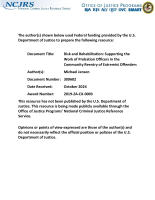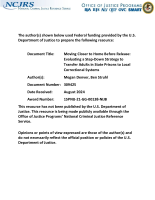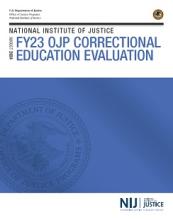Reentry Planning of the Future?: A Balanced Critique of Web-based Reentry Planning Applications
Journal
Springer Nature Link
Date Published
March 2025
Agencies
NIJ-Sponsored
Publication Type
Research (Applied/Empirical)






